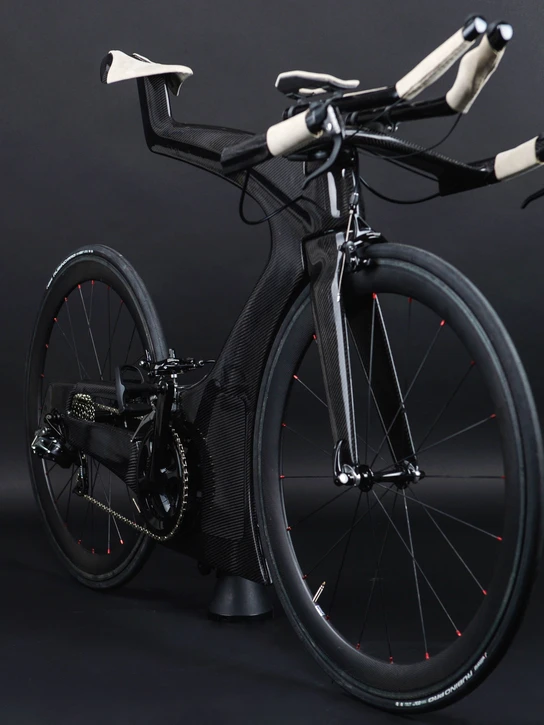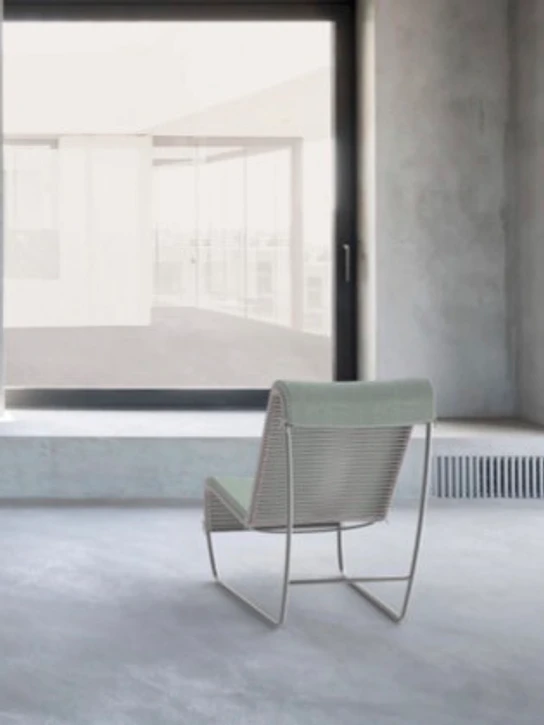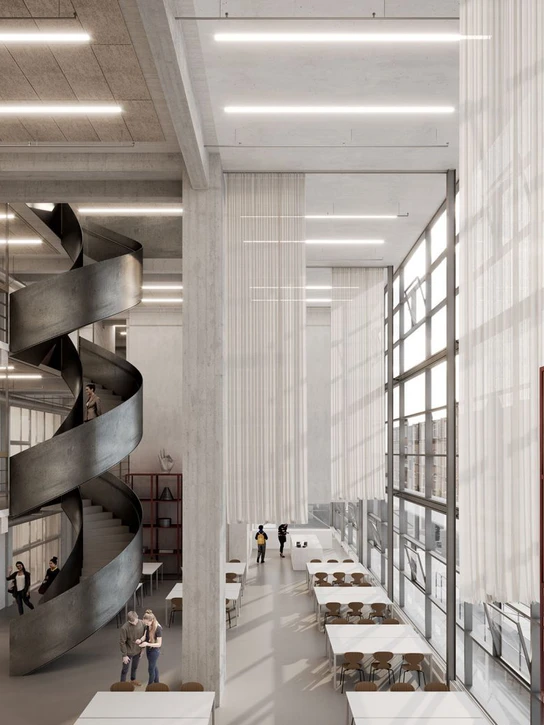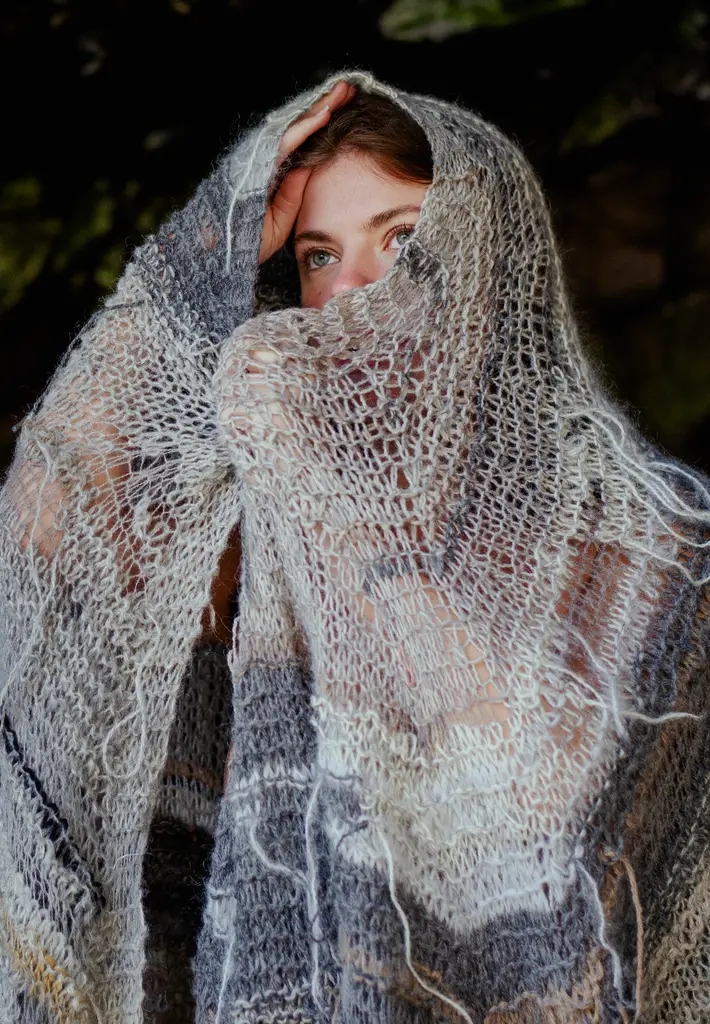Industrial Design
- Semester start
- August / September
- Registration deadline
- (Quota 2) 15th of March at 12.00 PM (CET) / (Quota 1) 5th of July at 12.00 PM (CET)
- Duration
- 3 years (180 ECTS)
- Admission requirements
- Entrance examination
- Location
- Kolding School of Design
- Instruction language
- Danish
Why should I study Industrial Design?
Do you find it exciting to combine aesthetic design with functional aspects, production technology possibilities and human considerations? And also to develop concepts and products based on the visionary notions of the future that your design will help create? Then Industrial Design is probably right for you. It is an opportunity to make a difference, both for people and for the environment.
You can see and download cirriculum and course descriptions via the links presented, but please note that they are only available in danish since the language of instruction for the bachelor degree program is danish.


“Being an industrial designer you have the opportunity to make a difference, both for people and for the environment.”
What will I learn?
Your toolbox will also contain basic skills within the areas of concept and product development, and you will gain insight into disciplines such as service design and behavioural design as well as learn how to initiate design processes.
You will come to understand and master construction principles and gain knowledge about different materials, their properties and how they are processed.
You will also learn to create prototypes and models, including 3D modelling and visualisations and acquire a perception of industrial working and production methods.
Industrial designers must be able to generate ideas, create designs, comprehend functions and know how to collaborate with companies (and also be knowledgeable about business models, communication and branding). They must also be able to collaborate with other professions.
Industrial designers are responsible for creating solutions that are meaningful for people as well as the environment, so you will discover that the programme has a broad focus on sustainability and also incorporates users in the design process.
In the course of your studies you will have the opportunity to spend a semester at a design school abroad. For example, you may want to specialise even more within an area of specific interest to you.

“Business collaborations will give you the opportunity to work under conditions and with issues that are real.”
Courses (Only avaliable in danish)
Design som virkefelt
Introduktion til designstudiet og fagfeltets facetter, hvorved du opbygger en begyndende faglig selvforståelse.
Model og materiale
Formålet med dette kursus er at give den studerende en grundlæggende introduktion til fagrelevante formgivningsteknikker, særligt med fokus på samspillet mellem form, materiale og bearbejdning i praksis.
Form
Introduktion til og træning i færdigheder inden for rumlig skitsering, komposition samt formanalyse og formudvikling. Forløbet afsluttes med et mindre formudviklingsforløb, hvor du afprøver dine færdigheder i en designfaglig kontekst.
Visualisering
Kurset introducerer til visualiserings- og skitseringsteknikker og har som formål, at du oparbejder en fortrolighed med at skitsere og kommunikere visuelt.
Koncept og formudvikling
Formålet med dette kursus er at introducere de studerende til designprocessen med vægt på koncept og formgivning af et produkt. Der er fokus på formsprog og at bruge forskellige skitserings- og modelteknikker til at udvikle form, funktion og udtryk indenfor en industrielt rettet produktgruppe.
Design som virkefelt
Introduktion til designstudiet og fagfeltets facetter, hvorved du opbygger en begyndende faglig selvforståelse.
Farve
Introduktion til farvens kompleksitet og betydning for et design, herunder indflydelse af lys, materiale og form, historisk farvelære, æstetik, optræning af færdigheder inden for analog og digital farve samt udvikling af et individuelt farvekoncept.
Visualisering
Kurset introducerer til visualiserings- og skitseringsteknikker og har som formål, at du oparbejder en fortrolighed med at skitsere og kommunikere visuelt.
Legetøj
Kurset introducerer dig til oplevelsesbaseret design med fokus på design for legeoplevelser. Formålet er herved at give dig en forståelse af, hvordan de objekter, du designer, påvirker den menneskelige oplevelse.
Værktøj
Formålet med dette kursus er at introducere dig til overvejelser omkring funktion og praktisk anvendelse af et produkt. Du skal udvikle et design af et værktøj/redskab, hvor både den fysiske brug af produktet og afkodning af produktets udtryk er væsentlige elementer.
Førsteårsprøvens projektperiode
Selvformuleret projekt der bygger på indsigter og læring fra det første studieårs undervisning. Projektet indgår som et element i førsteårsprøven.
3D
Træning i specifikke 3D-færdigheder med særligt fokus på digital modellering (eksempelvis brug af Rhinoceros som 3D-program).
Teknologi og Innovation
Anvendelse og forståelse af teknologi og innovation som begreber samt inddragelse af FN’s verdensmål i projekttilgang.
Designproces og metode
Fokus er på designprocessen og designmetoder, herunder brugerinddragende elementer. Gennemførelse, udførelse og refleksion over processen samt udvalgte anvendte metoder analyseres og vurderes i en skriftlig rapport med afsæt i projektet.
Universelt design
Formålet med kurset er at give dig indsigt i Universal Design og tilhørende teorier og metoder.
Privat
I kontekst af det hjemlige dykkes ned i forskellige metoder og principper for at arbejde med konstruktion og bæredygtighed.
Professionel
Der designes til en professionel brugergruppe og dennes arbejdsmæssige dagligdag ved brug af antropologiske metoder og en høj grad af brugerinddragelse.
Internationalt samarbejde
Kurset skal give dig en forståelse for en helt anden kulturel kontekst end den nordiske, samt praktisk erfaring med at arbejde sammen på tværs af landegrænser. Der samarbejdes med studerende og/eller virksomheder fra en anden kulturel baggrund end den typisk nordiske og fokuseres på en global problemstilling.
Valgfag: Servicedesign/Detaljer
Formålet med dette kursus er at give dig indsigt i de overvejelser, der skal gøres, i at skabe sammenhæng mellem designkoncept og detaljering, samt betydningen af detaljer og samlinger som vægtige elementer i et design.
Brand, produkt og kommunikation
Med afsæt i et specifikt brand vil du sammen med et tværfagligt designteam arbejde med bæredygtige strategier, virksomhedsanalyse med fokus på brugere, brandidentitet og produktionsmetoder, og på denne baggrund designe en visionær kollektion, der præsenteres for virksomheden.
Faglig position
Kurset introducerer til modeller til kortlægning af strømninger indenfor designfeltet, herunder med fokus på værdiskabelse for aftagere og samarbejdspartnere. I forløbet vil du kortlægge egne designkompetencer, din faglige profil og identificere hvilken specialisering du ønsker at styrke, for at bringe dig nærmere dine mål for fremtiden.
Faglig specialisering / One Step Closer
Dette kursus tager afsæt i dit ønske omkring videre specialisering, formuleret i kurset Faglig position. På baggrund af dette ønske, udvikles et eget designprojekt, der hjælper dig med at komme tættere på at opnå ambitionerne for dit fremtidige professionelle virke som designer.
Bachelorprojekt
På baggrund af din samlede viden samt kompetencer og færdigheder rammesætter du et projekt baseret på dit individuelle interessefelt med fokus på dit ønske om specialisering og din fremtidige professionelle karriere.
“You learn to work independently, in teams and on projects with your own and shared design assignments.”
What is the best way to learn?
The courses will typically alternate between theoretical presentations, workshops, method-specific instruction, project work (in groups or individually) and field work.
It’s important to us that you learn to be proactive in the projects, make decisions and drive the process towards a goal. Design is not a desk job, so much of the knowledge you gain will come from field studies, where you will be in touch with several different user groups, companies and different disciplines. The projects alternate between individual projects and group work and between experimental projects aimed at design competitions and more narrowly defined projects in collaboration with companies. In addition, there will be projects where you will work with design students from other lines of study, for example Communication Design or Textile Design.
We have some excellent workshops, where you can work with different materials—e.g. wood, metal, plastic and leather—as well as digital workshops, where you can develop and visualise your project through, for example, animations, renderings and 3D prints.
You will have your own study space, where you can work on the projects when you don’t have classes; hence you will always have your own base in the same room as your fellow students. You also have the opportunity to participate in study trips to more distant parts of the world, which will give you a chance to gain a greater cultural understanding and test your skills in a novel context.
Typically there are other activities in addition to the scheduled ones, which can be social activities (e.g. the school’s Friday bar) or professional activities, such as afternoon workshops or internal 'competitions'. In the 'competitions' you can challenge any student from the Industrial Design programme to see who can make, for example, the best, the funniest or the wildest design (of a nail file, a drone, a lawn mower, a life boat, etc.) in two weeks.
Learning through making is a core part of the Kolding School of Design approach and the education hosts 20 practical studios




What job can I get?
We live in a physical world, where the products we surround ourselves with and the way we use these products are of great importance, both for how we relate to each other and for the environmental footprints we make.
Your role as an industrial designer could range from the more classic, where you develop new products (which can be anything from chairs, groundwater pumps and razors to drone delivery mailboxes, where packages are delivered and picked up), to other types of roles, for example as a project manager in the public sector focussing on health innovation and development of concepts for patients' journey from the first meeting with the hospital until their discharge.

“You will learn to work with global and local issues across cultural and professional differences.”
Important to know when you apply
This is because the disciplines overlap in some fundamental aspects – and this way you will know which programme and specialisation matches your motivation and way of working, and be able to decide the direction for you, with the guidance of your teachers.
Accessory Design and Industrial Design both focus on spatial sketching and formgiving using analogue and digital tools such as 3D computer design. At the same time you will be trained in developing concepts, products and business ideas, which are sustainable, commercially valid and socially responsible.
Aesthetics and sensuousness characterise both disciplines, but where Accessory Design typically focuses on expressive and conceptual products with a direct relation to the body, for instance shoes, bags and jewellery, Industrial Design focuses more on functional products that relate to people in a wider contextual perspective, ranging from the utility items in your home such as lamps and electric kettles, to products applied in professional contexts. This could be blood pressure monitors or equipment for the robotics industry.
Do you dream of becoming a designer?
Take the first step and apply for admission. The deadline is 15th of March at 12.00 PM for quota 2 applicants and 5th of July at 12.00 PM for quota 1 applicants.
Interested in studying a Bachelors Degree in Textile Design?

